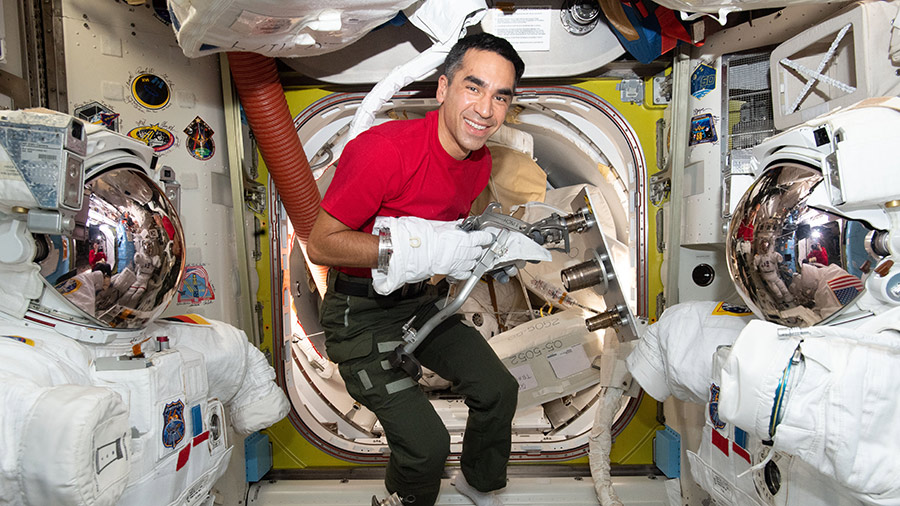
An array of space biology and combustion investigations topped the microgravity research program aboard the International Space Station on Monday. Life support work and cargo transfers also kept the Expedition 66 crew busy at the beginning of the week.
Living in space has been shown to impact an astronaut’s vision even after returning to Earth. NASA Flight Engineers Raja Chari and Kayla Barron worked throughout the day studying how weightlessness affects eye structure and visual function. The duo’s research efforts may help scientists develop treatments for eye conditions in space and on Earth.
Astronauts are also learning how to exercise more effectively in space. The lack of gravity leads to muscle and bone loss that crews seek to avoid with daily two-hour workout sessions on the station. ESA (European Space Agency) astronaut Matthias Maurer used the Tranquility module’s advanced resistive exercise device during the morning performing exercises such as bench presses, squats, and dead lifts. He wore a specialized suit for the EasyMotion study that was stimulating his muscles during the workout which may improve and lessen the duration of exercise sessions in space.
Flames and materials burn longer and differently in microgravity and scientists and engineers use the data to keep astronauts safe in outer space. NASA Flight Engineer Mark Vande Hei opened up the Combustion Integrated Rack today and configured components inside the research device. He set up the rack for the Solid Fuel Ignition and Extinction study to improve fire suppression techniques and improve spaceship safety.
NASA astronaut Tom Marshburn worked throughout the day in Tranquility servicing components on the oxygen generation assembly. He collected samples from the life support device for analysis on the ground.
Commander Anton Shkaplerov focused on a pair of Russian experiments on Monday. He explored ways to create a sterile research environment aboard the station then researched how the human heart adapts to space. Flight Engineer Pyotr Dubrov unpacked medical kits delivered recently inside the ISS Progress 80 resupply ship.
Learn more about station activities by following the space station blog, @space_station and @ISS_Research on Twitter, as well as the ISS Facebook and ISS Instagram accounts.
Get weekly video highlights at: http://jscfeatures.jsc.nasa.gov/videoupdate/
Get the latest from NASA delivered every week. Subscribe here: www.nasa.gov/subscribe




